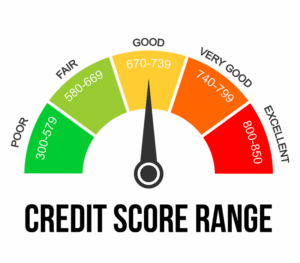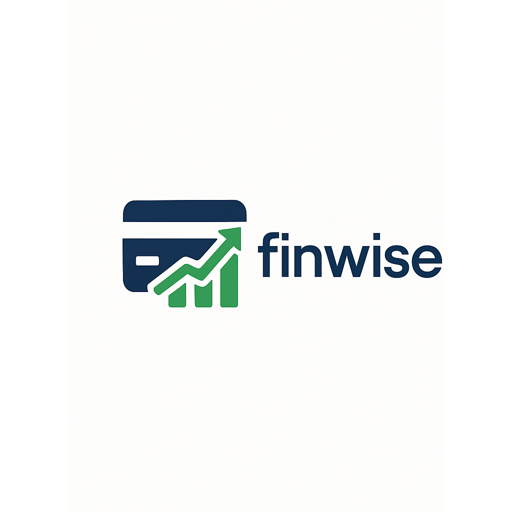The Note: How Decelerating U.S. Economic Growth Affects Using Consumer Credit
The American economy is already on track for a slower growth phase in 2025, according to forecasts by economists who envision an expansion that lags behind its performance in several preceding years.

Although the country is not in a recession, that slower pace is expected to affect consumer behavior in many ways — not least when it comes to use of credit. Here we discuss how a slower economy is generally transforming the way in which Americans are using their credit cards, managing debt and obtaining financing; and provide practical tips for consumers and insight for credit issuers.
Making Sense of the Shift: Why Is the U.S. Economy Slowing?
The slowdown in 2025 results from a mixture of reasons such as:
Tough monetary policies imposed to curb inflation
Softer demand from consumers after years of pandemic-related stimulus
Global trade and labor markets lacking in confidence
Lending by banks and other lenders tightening up.
Inflation has come down slightly from its 2022-2023 peaks, but to keep inflation at bay the Fed continues to keep interest rates relatively high. These elevated borrowing costs slow investment, hiring and spending by both consumers and businesses. Thus, GDP growth is projected to be about 1.6%, according to OECD figures.
When the Growth Rate Slows What Happens to Credit Use?
Weaker economic activity has a ripple effect on consumer finances. Here’s how it generally affects credit use:
More People Using Credit Cards to Pay for Daily Purchases
While wages have remained stagnant, and inflation has pushed up prices — especially for essentials like groceries, rent and fuel — many consumers turn to credit cards as a way to bridge the gap between their income and their spending. This leads to:
Increased balances month over month
Decreased rates of payment, particularly in less wealthy homes
Higher credit utilization (that can negatively impact your credit scores).
Total credit card debt in the United States recently surpassed $1.3 trillion, according to recent reports from the Federal Reserve Bank of New York — a new record.
Growth in Delinquency Rates
In times of slowing economic growth, job creation also generally cools. When people are struggling to pay bills or dealing with unexpected costs (medical emergencies, loss of job), missing payments becomes more frequent. The result is a rise in:
30-day and 60-day delinquencies
Charge-offs from credit card issuers
Stricter lending standards
Typically, younger borrowers and people with subprime credit scores are hit hardest.
Consumers Seek Lower-Interest Alternatives
Some consumers are actively seeking lower-cost options to help them address debt when budgets grow tighter. This might include:
0% intro APR balance transfer credit cards
Consolidation of high-interest loans with a personal loan
Counseling or debt management Its not always the case that these are effective.
But as banks get more cautious, these products might become harder to qualify for.
How Credit Card Issuers Are Responding
Credit card issuers closely watch macroeconomic indicators to control risk and profit. At lower growth, the incentives for issuers are:
Loosen underwriting standards: lower credit scorers or higher DTIs
Decrease credit limits: particularly on dormant or high-risk accounts
Provide targeted promotions: such as cash rewards or signup bonuses to lure in high-quality borrowers
Raise your rates: on revolving balances
The goal of these adjustments is to strike a balance between growth and risk as default probabilities increase.
Consumer Tips: How to be Smart with Credit During an Economic Slowdown
Though economic headwinds can make financial life tougher, consumers still have tools to deal responsibly with credit. Here are five practical strategies:
Track Your Spending Closely
Track where your money is going — through budgeting apps or credit card dashboards. Find some discretionary items that you can scale back or eliminate.
Pay More Than the Minimum
Wherever you can, make more than the minimum payment on your cards. This will lower you interest costs and shorten the time it takes to repay your debt.
Use Balance Transfer Offers Wisely
If you’re carrying high-interest balances, look at cards that offer 0% APR for 12 – 18 months. Just make sure you know what the fees are and when you’ll need to pay.
Avoid New Debt Unless Necessary
Seek permission before you finance big new purchases or take out fresh loans. Use credit for the necessities or emergencies — not wants.
Build an Emergency Fund
Even a modest cushion of $500 to $1,000 can help bail you out before you turn to credit during work disruptions or unexpected bills.
Opportunities for Financial Education
It’s also an opening for financial services, employers and fintechs to encourage financial literacy. Consumers need education on:
The effect of the level of interest rates on total repayment
The importance of credit utilization
Credit score protection
Managing debt vs. saving
Simple tools and education can help people make better decisions that, over time, add up to long-term financial health.
Looking Ahead: What to Expect in Late 2025 and for the Rest of 2026
Though the economy isn’t in crisis, the next 12 to 18 months are likely to be sluggish. The Fed could then start to cut the rate slowly in late 2025 if inflation stays under control. That may offer some relief to borrowers, but obstacles will persist.
Consumer spending is likely to slow, particularly on things people don’t need.
Joblessness may increase a little and financial pressure will build
Credit could remain tight, especially for subprime borrowers
In the end, a credit card market must evolve on both the issuing and consumer side.
Final Thoughts
The effects of slower U.S. economic growth aren’t just about Wall Street — though the pain is felt there in a very public way. Household budgets are squeezed, credit use is changing, delinquency risks are increasing and financial decision-making is more important than ever.
Whether you are a consumer working to be prepared, or a lender such as Truist adjusting to conditions, knowing how credit usage changes in slower economic times could end up being the difference between stability and struggle.
With something close to informed, proactive and disciplined responses by the public and American leaders we can get through this period of slower growth — and come out stronger on the other side, when faster economic growth re-emerges.
Our Post

High Interest Rates, Credit Cards and the U.S. Consumer: What to Know in 2025
The Note: How Decelerating U.S. Economic Growth Affects Using Consumer Credit



